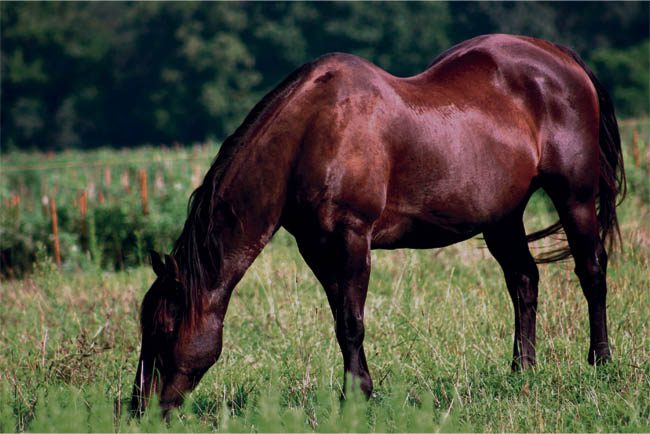A third of Danish horses diagnosed with laminitis in a study were euthanized within 12 months of coming down with the debilitating condition.
Researchers set out to identify risk factors for cases of laminitis in Denmark based on 110 cases and 80 control animals.
The outcome and incidence of repeated episodes were obtained by following cases for 12 months.
Danish researcher Nanna Luthersson and her colleagues, writing in the Journal of Equine Veterinary Science, found that a recent change in grass, high quality pastures, and breed were significant risk factors.
They reported that 33% of all laminitis cases were euthanized within 12 months of diagnosis, compared with only 7.5% of the controls (none for laminitis-associated reasons).
Information was obtained from veterinary diagnosed cases of laminitis – 69 new and 41 chronic cases – and 80 control animals. The study team’s control animals were selected by using the next non-laminitic horse or pony seen by that participating practice.
A recent change of grass, being on what was considered high quality grass and being a cold-blooded type – less than 149cm (that is, Shetland, Fell, Welsh, or Dartmoor ponies, Icelandic horses, Norwegian fjords, or a mix of these breeds) – were all significant risk factors for laminitis.
Other factors such as weight, and estimated starch intake were not found to be significant.
The likelihood of euthanasia following a diagnosis of laminitis depended upon the type of work and the time of year of diagnosis, the researchers reported.
“Horses in work at the time of diagnosis as well as those diagnosed in the winter and spring were more likely to be humanely destroyed within the next 12 months than those not in work or diagnosed in the autumn and summer,” they wrote.
The study, they say, confirmed the importance of grass turn-out and breed on laminitis risk.
Luthersson N, Mannfalk M, Parkin TDH, Harris P. “Laminitis: Risk factors and outcome in a group of Danish horses.” J Equine Vet Sci DOI: http://dx.doi.org/10.1016/j.jevs.2016.03.006







